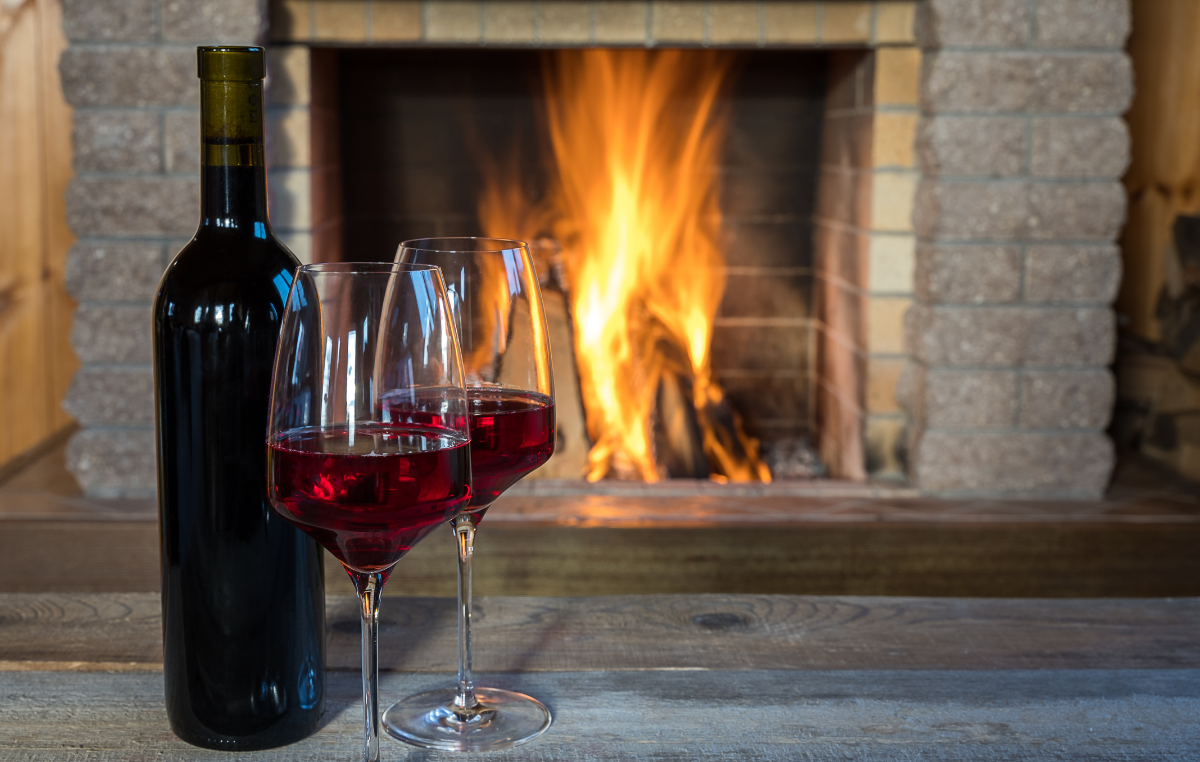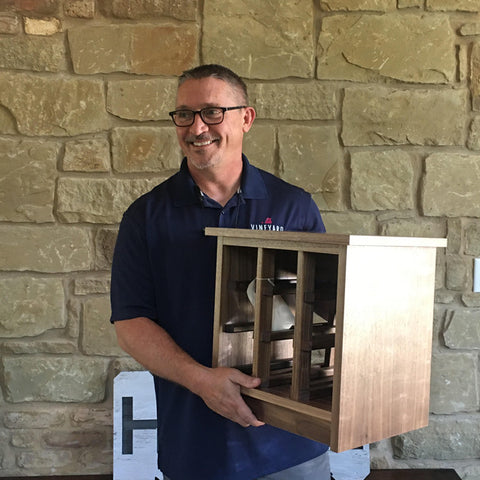Storing wine is an art that combines science, patience, and precision to ensure that every bottle reaches its full potential. Whether you're a seasoned collector, an enthusiastic hobbyist, or someone new to wine, understanding the intricacies of proper wine storage can greatly enhance your experience. This blog dives into essential tips for optimal wine storage, common pitfalls to avoid, expert insights, and real-life success stories from those who have mastered the practice.
Optimal Wine Cellar Settings for Different Seasons
Maintaining the ideal conditions in your wine cellar requires consideration of seasonal variations. Temperature and humidity levels may fluctuate with the changing seasons, potentially affecting the preservation and aging of your wine collection.
By adjusting your cellar settings accordingly, you can ensure that each bottle remains in pristine condition year-round. In this section, we'll explore how to adapt your wine storage environment to different seasonal challenges, ensuring that your wine is always kept at its best.
Summer Adjustments
During the summer months, warmer temperatures can pose a challenge to maintaining a consistent environment for your wine. Here's what you can do:
Monitor temperature spikes and ensure consistent cooling.
- Increase humidity to combat dry air, which can dry out corks and lead to oxidation.
- Use cooling units that are specifically designed to maintain the desired temperature range.
Winter Adjustments
Winter can bring colder temperatures, which require different strategies for optimal wine storage. Consider the following:
Prevent temperature drops by insulating your cellar. Proper insulation helps maintain a stable interior climate despite outdoor temperature fluctuations.
- Use humidifiers to maintain proper moisture levels, ensuring that corks remain intact and bottles are well-preserved.
- Seal any gaps where cold air might enter, further securing the environment of your wine storage space.
Wine Cellar Maintenance: Ultimate Checklist for Wine Enthusiasts
Keeping your wine cellar in top shape requires regular maintenance. Here's a checklist to help you stay on track.
Monthly Tasks
Check Temperature and Humidity Levels
Ensuring the right environmental conditions is crucial for the preservation of your wine. On a monthly basis, take the time to:
- Verify the temperature using a reliable thermometer. Ensure it remains within the optimal range of 45°F to 65°F (7°C to 18°C), with 55°F (13°C) being ideal.
- Measure humidity levels with a hygrometer. Aim for a relative humidity of 60% to 70%. This helps keep corks moist and prevents premature aging or spoilage.
Inspect Cooling Units for Proper Function
Your cooling units are at the heart of maintaining a stable temperature in your wine cellar. Each month:
- Examine the units for any signs of malfunction, such as unusual noises or fluctuations in temperature.
- Clean filters and vents to ensure efficient performance and prevent dust buildup that could obstruct airflow.
- Check refrigerant levels and consider scheduling a professional service if you notice any irregularities in the unit's performance.
By consistently monitoring these aspects, you'll create a stable and suitable environment that supports the longevity and quality of your wine collection.
Annual Tasks
Clean All Surfaces and Shelving
Maintaining cleanliness in your wine cellar is essential for preventing mold growth and ensuring a hygienic environment for your wine collection. Annually, dedicate time to thoroughly clean all surfaces and shelving:
- Remove all bottles from the shelves and store them temporarily in a safe, temperature-controlled area.
- Dust and wipe down shelves using a soft cloth or a microfiber duster to remove any accumulated dust and debris.
- Clean surfaces with a mild solution of water and vinegar or a gentle, non-abrasive cleaner. Avoid harsh chemicals that could leave residues detrimental to wine storage.
- Dry all areas completely before replacing the wine bottles to prevent moisture buildup, which can lead to mold and mildew.
Service Cooling and Humidification Systems
The efficiency and reliability of your cooling and humidification systems are paramount to preserving the integrity of your wine collection. Annually, it's vital to:
- Schedule a professional inspection and service of your cooling units. A qualified technician can identify and address potential issues before they escalate, ensuring the units operate at peak efficiency.
- Examine and replace filters in both cooling and humidification systems. Clean filters enhance performance and prevent dust and debris from compromising the systems.
- Check for refrigerant leaks and ensure that refrigerant levels are adequate. Low refrigerant can impede the cooling unit's ability to maintain consistent temperatures.
- Test the humidification system to confirm it is functioning correctly, providing the necessary humidity levels to keep corks intact and wines preserved.
Common Wine Storage Mistakes to Avoid

Even seasoned collectors can make mistakes that compromise their wine. Here are some insights from experts to help you avoid common pitfalls.
Inadequate Temperature Control
One of the most critical aspects of wine storage is maintaining a stable temperature. Experts recommend keeping your wine cellar between 45°F and 65°F. Temperatures that are too high can accelerate the aging process and spoil the wine, while those that are too low can cause the wine to lose its complexity. Avoid placing your cellar in direct sunlight or near heat sources such as radiators, ovens, or washing machines. These can create temperature fluctuations that are detrimental to wine storage.
Poor Humidity Management
Equally important as temperature is humidity. Wine requires a storage environment with humidity levels between 50% and 80% to keep the corks moist. Dry conditions can cause corks to shrink, allowing air to seep in and oxidize the wine. On the other hand, excessive humidity can lead to mold growth and damage labels. Use a hygrometer to regularly check the humidity in your cellar and employ a humidification system if necessary to maintain optimal conditions.
Vibration Exposure
Constant vibrations can disturb the sediment in wine bottles, affecting the wine's clarity and aging process. It is crucial to place your wine cellar in a location that minimizes exposure to vibrations.
Avoid areas with heavy foot traffic or near household machinery like laundry appliances and HVAC systems. Investing in vibration-absorbing furnishings, such as specialized wine racks and padded shelves, can provide an extra layer of protection for your collection.
Humidity and Temperature Control: Why It Matters for Your Wine
Understanding the role of humidity and temperature in wine storage is key to preserving your collection’s quality.
Ideal Temperature Range
Keeping your wine at the proper temperature is essential for maintaining its integrity. The optimal range for storing wine is between 45°F and 65°F, with 55°F often considered the perfect temperature. Wines stored at higher temperatures age too quickly, while those stored too cold may result in a flat taste.
Impact of Temperature Fluctuations
Temperature fluctuations can be particularly harmful to wine. Sudden changes can cause the liquid to expand and contract, potentially pushing the cork out of the bottle or allowing air to seep in. This can lead to oxidation, spoilage, and a loss of the wine’s intended flavor profile.
Humidity Levels
Humidity control is another vital factor in wine storage. Corks need a humid environment to remain pliable and effective seals; too dry, they shrink, and too moist, they can foster mold. Maintaining a humidity level between 50% and 80% helps ensure the corks stay in optimal condition to protect the wine.
Maintaining Optimal Conditions
To keep your wine cellar at the perfect temperature and humidity, invest in reliable climate control systems. A wine refrigerator can help maintain consistent temperatures, while a humidification system can keep the environment within the desired humidity range. Regularly monitor these levels using a hygrometer and thermometer to ensure that your wine remains in ideal conditions for aging and enjoyment.
Choosing the Right Wine Cooling Unit for Your Needs

Selecting the perfect wine cooling unit is essential for maintaining the ideal environment for your collection.
Types of Cooling Units
- Self-Contained Units: Easy to install and perfect for small collections.
- Split Systems: Ideal for larger cellars, offering more precise control.
Factors to Consider
- Capacity: Ensure the unit can accommodate your collection size.
- Noise Level: Choose a unit with minimal noise interference.
- Installation Requirements: Evaluate the complexity and space requirements.
Wrapping It Up
In conclusion, maintaining optimal temperature and humidity levels are crucial for preserving the quality and flavor of your wine. By choosing the right wine cooling unit and ensuring proper storage conditions, you can enjoy your collection to its fullest potential. Investing in reliable climate control will reward you with every sip.


